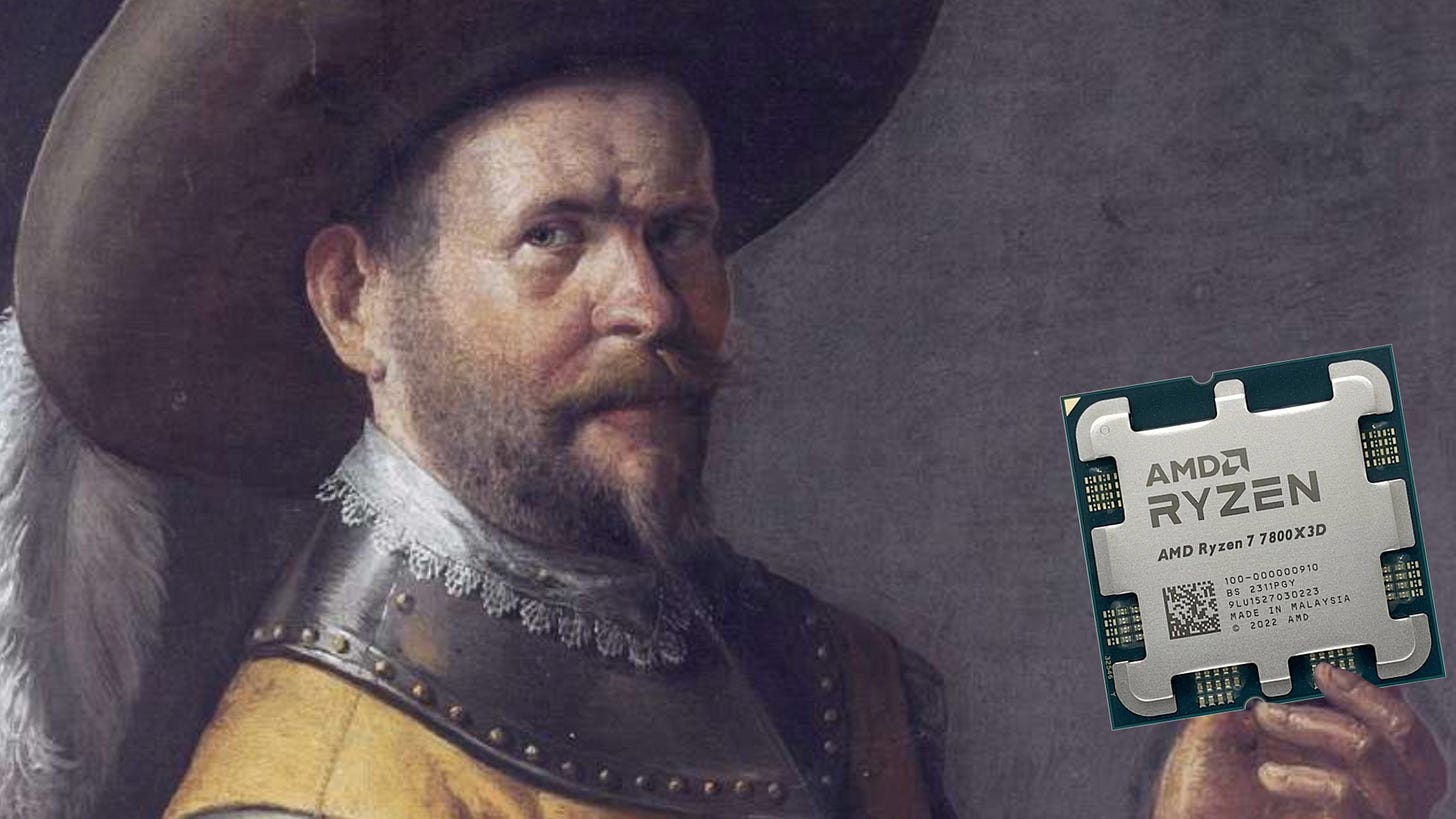A few weeks back I decided to build a PC. This was a whole new world for me. Although I’d wanted a machine for years, I’d never actually taken the final step and pulled the metaphorical trigger. But this time? I did. I was ready. I was willing to dive in.
But this is where things got complex. Unfortunately, if you want to build a PC, you actually need to, you know, build it. Choose what goes in there. In my journey, this led to a glorious period of experimentation and research, one where I did a lot of things wrong, but, in the end, a lot right.
With this in mind, I wanted to walk through how I approached picking PC parts from a distinctly non-expert angle. I’m not talking about specific components or brand recommendations, but instead, a series of concepts about how to make those decisions.
And if you doubt me? Well, these concepts have already helped one of my pals build their own PC so, maybe, just maybe, they’ll help you too.
First up…
Figure out why you’re building it
What do you want to use the PC for? What are going to be the most pressing (and high performance) things that you need it to do? These are the demons you must slay to begin.
For me, this was a combination of media work (writing, audio, and video projects) and some gaming. This made it clear that I needed something high-power enough to last for several years of intense load. But, for example, if all you want to do is browse the internet, then maybe you don’t need an RTX 5090.
Learn — and look for overviews
After reading that previous section you might be asking: “what the hell is an RTX 5090?”
The best way to answer that is by giving some advice; plough through some guides. Learn. Learn learn learn. There’s a lot of confusing terminology in the PC world, but there’s also a wealth of information out there to help you navigate it.
One step is watching YouTube. There are a huge variety of excellent videos out there, but I’d recommend this one as a good place to start:
Another option (and one I’m partial to), is reading. Go through articles that explain the basics of PCs, that go over how to choose parts, and that collate the best builds. To learn learn learn you should read read read.
The key here is absorption. Take some time, soak it up — there’s no rush. Understand as much about PCs as you can, get obsessed and consume consume consume.
Select a budget (and try to stick to it)
Set yourself an amount you’re happy to spend on your new PC and stay true to it. Yeah, you could quite easily spend €8,000 on a PC, but do you need an €8,000 PC?
To answer that rhetorical question: almost definitely not. Find a number you’re happy to pay (most likely somewhere between €1,000 and €3,000) and stick to it best you can.
And how to get to that number? Easy…
Spend some time on Reddit
One of the nice things about building a PC is that untold thousands of people have already gone through everything you’re going through — and many of them posted on Reddit about it.
When it comes to selecting the parts of your PC, the platform is incredible for giving you an overview of what parts are popular and recommended.
For example, type “$1,800 compact PC for video editing reddit” into Google and you’ll find people who were on this path and came up with something that worked for them. Another approach is heading to r/buildapc. On that subreddit, you can either browse posts, or search for components and parts to see what people are saying.
If that all seems too much work — and you want to outsource your build entirely — visit r/buildapcforme or r/buildmeapc and some kind soul will tell you all you need to know.
Personally, I preferred taking influence from other places and creating my own machine, but it’s all about what you want. Zero judgement here.

Case (AKA how big do you want it?)
As I said earlier, a large part of this article is concepts to help you craft your PC, and I believe one of the biggest of these is how you actually store your PC components. That’s the case. I’m talking about the case. Think carefully about the case you want.
In my house, I didn’t have the space for a large PC, and it needed to fit inside a Kallax (basically 35cm tall and wide). That then influenced every other decision I made, as this MicroATX tower limited the sizes of components I could install.
Basically, when you’re choosing the parts for your PC, begin with a case and then work outwards from there. It makes everything far easier.
PC Part Picker
It’s time to introduce you to the single greatest tool you’ll encounter when building a computer: PC Part Picker. It’s the holy grail.
Effectively, it lets you pick parts, shows you what’s compatible, and gives you recommendations of good components. On top of that, it also collects builds from other users, giving you great insight into what everyone else is creating with your parts.
In all honesty, you could probably design, build, and buy a computer only using PC Part Picker, but I think that removes some of the joy and learning opportunities from the process.
But, as I’ve said, whatever works best for you is what’s, uh, best for you.
One final bit of advice: don’t be hasty
I’m sure that right now all you want to do is buy buy buy, but if I can offer a tiny little bit of advice it’d be this: wait.
Do some more research, double check everything, see if there are any deals or other recommendations. This saved me.
When I was choosing an AIO for my computer, PC Part Picker said it’d fit, but after taking some time out and reading on forums, I discovered that people who’d put one in the same case as mine had issues. This little bit of knowledge saved me hours of strife — and all I had to do was hold back buying something.
If you’re taking your first steps on your PC building journey, then I envy you. Going through all this process was some of the most fun I’ve had in ages — and I hope this helps you a little.
Until next time, lots of love.



